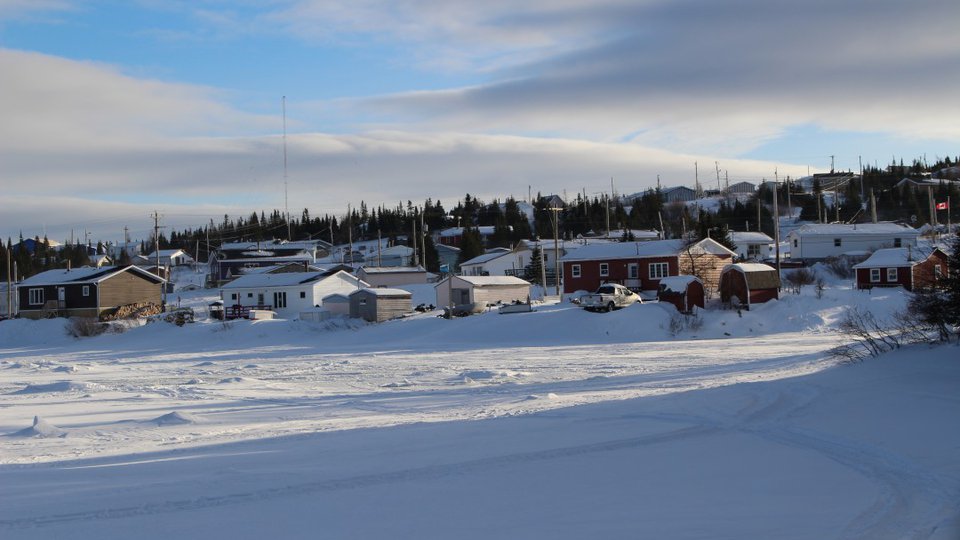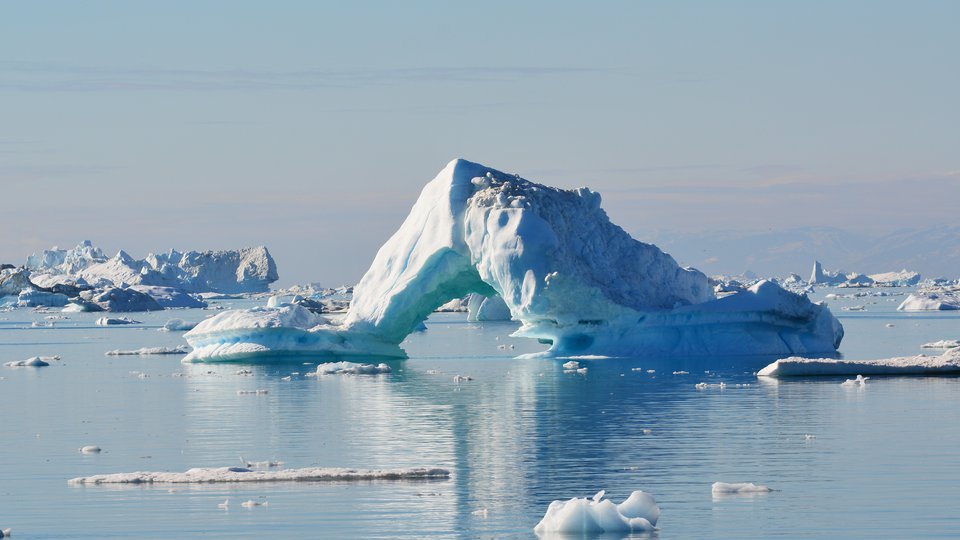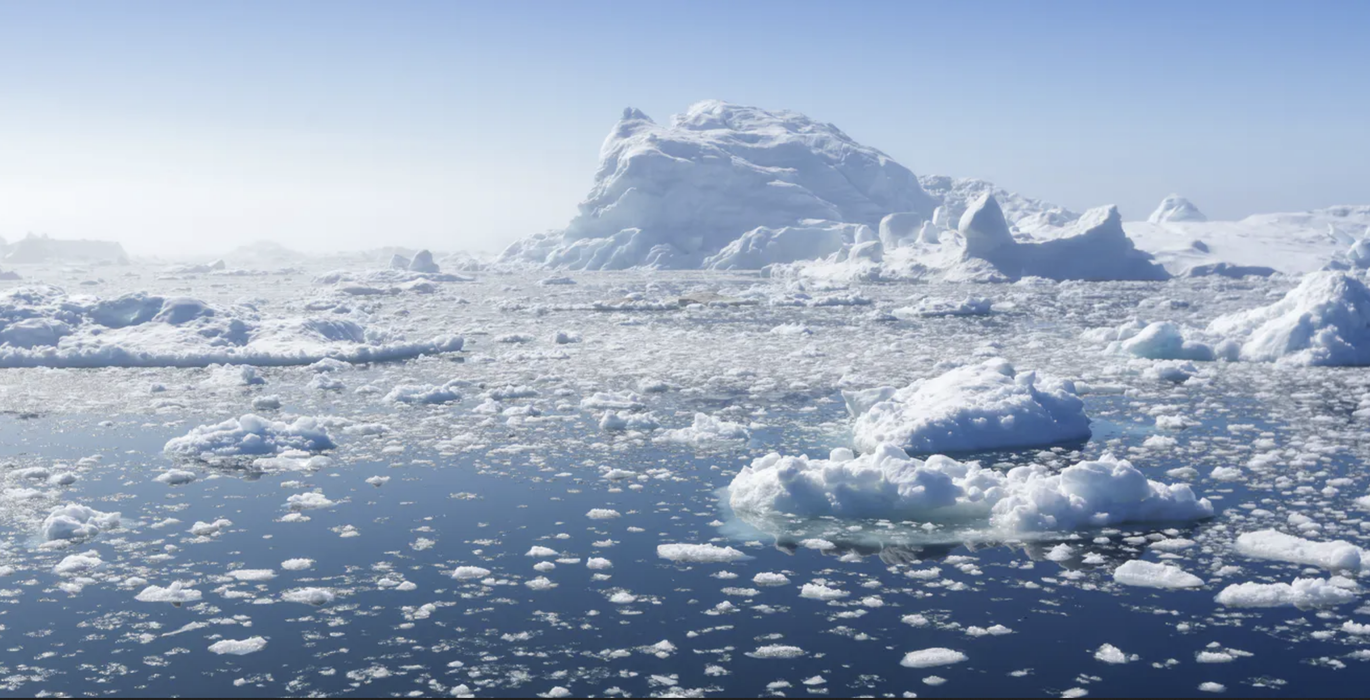
Each September, scientists like me look out for the point when the Arctic’s meagre summer fizzles out and sea ice begins to grow once more. This point is known as the annual sea ice minimum extent. It has declined consistently over the past 15 years, and 2019 was the second lowest after 2012 in 42 years of continuous satellite records. This year’s minimum is imminent, and there is already even less ice coverage than last year.
What’s causing this decline in minimum sea ice extent? The short answer is our changing climate. But the more specific answer is that Arctic sea ice is increasingly being thinned not just by warm air from above but by ever-warmer waters from below.
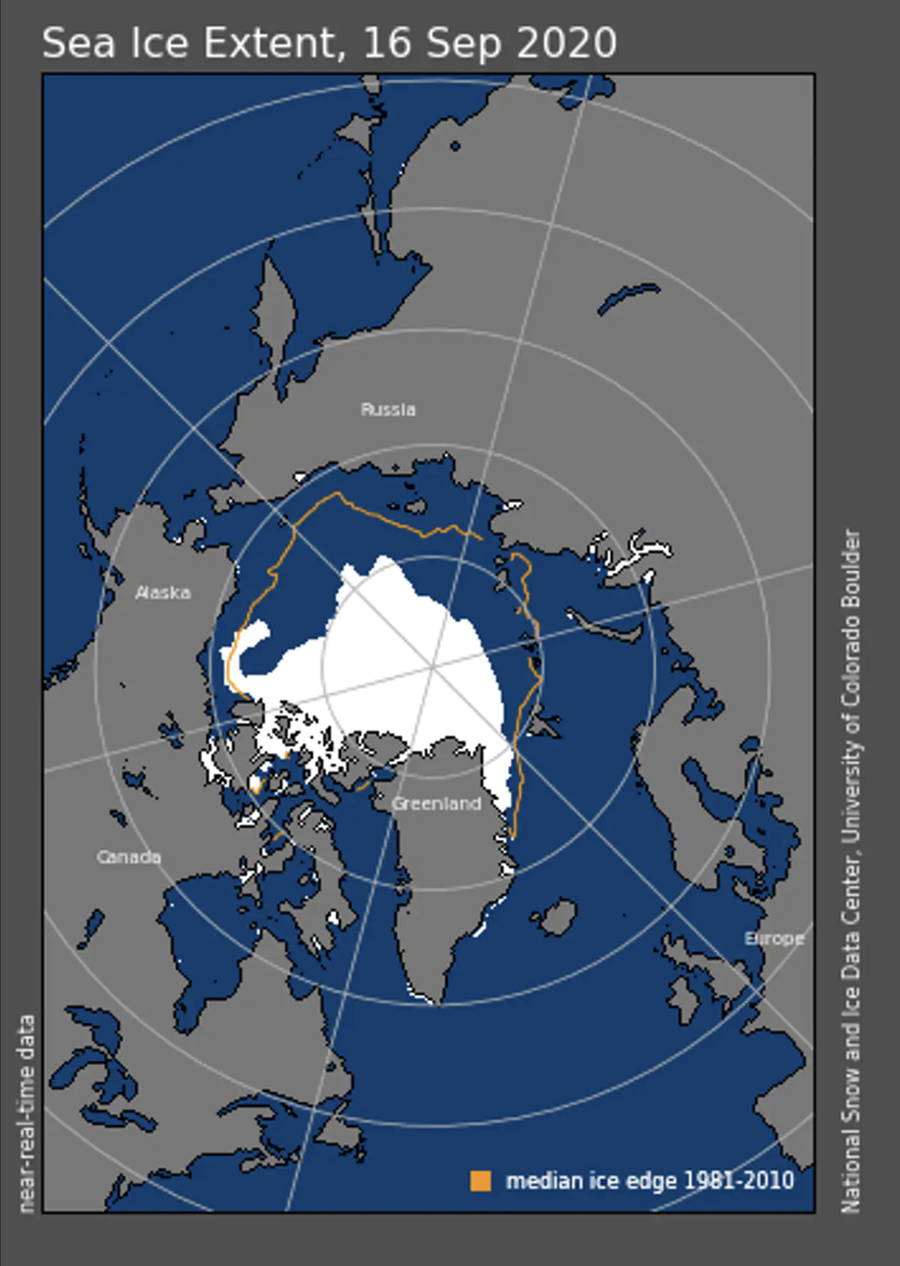
Arctic sea ice today (white) is covering a much smaller area than in 1980-2010 (orange line). (Photo: National Snow and Ice Data Center, University of Colorado, Boulder, CC BY-SA)
In fact, in a recently published scientific study my colleagues and I looked at why sea ice was melting in the eastern Arctic Ocean and showed that the influence of heat from the interior of the ocean has now overtaken the influence of the atmosphere.
While atmospheric heat is the dominant reason for melting in the summer, it has little influence during the cold dark polar winter. However, the ocean warms the ice from below year-round. Our new research shows that this influence has more than doubled over the past decade or so, and is now equivalent to the melting of nearly a metre thickness of sea ice each year (For comparison, at the North Pole the ocean is usually only covered by a couple metres of ice).
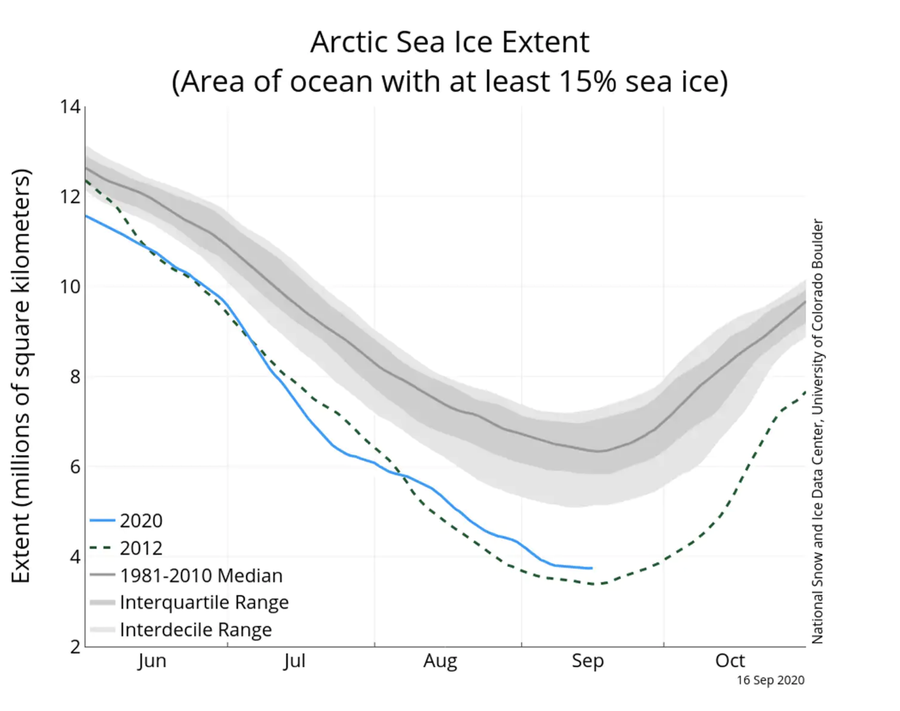
2020 will have the least Arctic sea ice ever – aside from 2012. (Photo: National Snow and Ice Data Center, University of Colorado, Boulder, CC BY-SA
This warm water, sometimes referred to as the “heat blob”, originates in the Atlantic and heads northwards via an extension of the Gulf Stream, entering the Arctic Ocean around Svalbard, an archipelago halfway between Norway and the North Pole. The blob has already resulted in the disappearance of winter sea ice off the northern coast of Norway and north-west Russia.
Further to the east, this warm water has been isolated from the sea surface, and so sea ice, by a layer of colder, fresher water. However, as the heat blob is getting warmer and moving closer to the surface its influence is now spreading eastwards through the Arctic.
In a second scientific paper we showed that currents in the upper Arctic ocean were increasing which, when combined with declining sea ice and the weakening of the boundaries between layers of warm and cold water, was potentially stirring more warm water from the heat blob towards the surface. The combined impact is a new back and forth relationship between sea ice and ocean heat which could lead to a new ocean climate state in the eastern Arctic Ocean.
All this may be feeding into ever more extreme climate change in the Arctic. Throughout summer 2020 the Siberian heatwave continually shattered temperature records, including eastern Arctic sea surface temperatures. And while sea ice reflects much of the sun’s rays back into space, open water is dark and absorbs the sun’s heat. So as the sea ice retreated the surface water is warmed, which in turned further warms the atmosphere above, quite apart from the influence of increasing greenhouse gases.
There is still much more to learn about the link between the eastwards spread of the influence of Atlantic heat, and the reduction in sea ice it brings, and knock on effects on severe weather at lower latitudes. But it is clear that the Arctic – already warming faster than anywhere else on Earth – could be in the process of transitioning to a “new” state.

